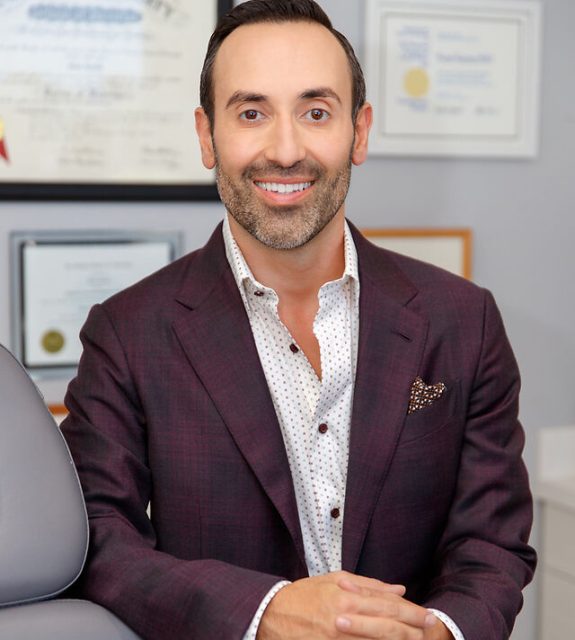Elizabeth Laikhter, BA contributed to this article.
Dr. Samuel Lin is a double board-certified Plastic Surgeon and Associate Professor of Surgery at Harvard Medical School who practices in Boston, Massachusetts. Dr. Lin is an active Board Member of the Susan G. Komen for the Cure and Bright Pink Foundations. Dr. Lin is active in both basic science and clinical research with a focus on face/neck/nose surgery (rhinoplasty), breast surgery (reduction, lift, and reconstruction), and body contouring. He collaborates with engineers, scientists, and other plastic surgeons at other institutions within the New England area, nationally, and internationally. He is the editor of several medical textbooks including Aesthetic Atlas of the Head and Neck, Atlas of Body Contouring, and Plastic and Reconstructive Surgery Pearls of Wisdom and Pearls of Wisdom Second and Third Editions. Haute Beauty Expert Dr. Samuel Lin discusses the different types of facelift procedures while specifying what areas of the face it targets.
 Photo Credit: ShutterstockOften as people age, changes in their face no longer reflect how they feel internally. Facelifts are popular procedures that can address signs of aging in the face and neck. True to their name, they lift the skin and deeper tissues of your face to promote a more youthful and energized appearance. However, the term facelift is sometimes used colloquially without necessarily differentiating the type of facelift, which can become confusing. This article walks you through the basics of different facelift procedures and which areas of the face they target.
Photo Credit: ShutterstockOften as people age, changes in their face no longer reflect how they feel internally. Facelifts are popular procedures that can address signs of aging in the face and neck. True to their name, they lift the skin and deeper tissues of your face to promote a more youthful and energized appearance. However, the term facelift is sometimes used colloquially without necessarily differentiating the type of facelift, which can become confusing. This article walks you through the basics of different facelift procedures and which areas of the face they target.
Non-Surgical Facelift
A non-surgical facelift involves the use of botulinum toxin (Botox) and fillers. Both are injectable compounds that work in unison to reverse early signs of aging and volume loss. Botox is a compound derived from bacteria that decrease the release of a molecule called acetylcholine at nerve endings, which in turn decreases the movement of facial muscles responsible for the formation of wrinkles. Botox is injected in very specific areas by board-certified plastic surgeons to target only muscles responsible for wrinkles, achieving a natural result. Fillers are made from several compounds, the most common of which is hyaluronic acid. Hyaluronic acid is a molecule made naturally by the human body and found abundantly in healthy skin. Fillers are injected into areas of volume loss to create a fuller, more youthful appearance.
Surgical Facelifts
Although fillers and Botox can address fine lines, wrinkles, and volume loss, they do not address excess skin or subdermal fat and muscle that has migrated downwards with the force of gravity. If you are looking to address these concerns, a surgical facelift, or rhytidectomy, may be a better option for you.
Surgical facelifts are more extensive procedures than non-surgical facelifts and require either general anesthesia or intravenous sedation. They are typically outpatient surgeries that sometimes do not require an overnight hospital stay. Patients may go home with drains and dressings over their incisions, which can come off after the first days. Any non-absorbable sutures can be removed within 7-10 days after the surgery.
Brow Lift
Starting from the top is the brow lift. Although it is not technically a ‘facelift,’ a brow lift targets and lifts the upper-third of the face. A brow lift can decrease the appearance of horizontal wrinkles on the forehead, as well as frown lines and vertical creases between the eyebrows. Additionally, it can lift eyebrows to a more natural and youthful position. There are two types of incisions that may be utilized to perform the surgery. The first is called a coronal incision, which is created from ear to ear in order to expose the forehead and lift skin, muscle, and fat tissue. The coronal incision is well concealed within the hair. The second incision option involves several small endoscopic incisions. These incisions allow for the insertion of an endoscope (a thin tube with a camera at the end and specialized surgical instruments in order to lift and reposition tissues beneath the skin. These small incisions are also very well concealed within the hairline.
 Photo Credit: ShutterstockMid-Face Lift
Photo Credit: ShutterstockMid-Face Lift
A mid-facelift rejuvenates the area from the lower eye through the corners of the mouth. It can smoothen laugh lines and lift cheek tissue that has migrated downward. Incisions for a mid-face lift start at the temples within the hair and extend in front of the ear. They are hidden in the hair and ear contour and therefore are less noticeable after the incisions heal.
Neck Lift
A neck lift removes sagging jowls, excess neck fat deposits, and loose neck skin to create a more contoured jawline and smooth neck. The incision for a neck lift starts in front of the ear and wraps around the ear into the hair behind the ear. This incision is well hidden in the contour of the ear and in the hair. Sometimes a small incision under the chin is also made to aid in lifting deep tissues of the neck.
Full Facelift
A full facelift combines a mid-face lift and neck lift. It lifts deep tissues to their natural positions and removes sagging skin from the cheeks all the way down to the neck. It does not, however, address the upper third of the face unless it is combined with a brow lift. The incision for a full facelift extends from the hair of the temple, to in front of the ear, and wraps around the ear to the hair behind the ear. Sometimes small incisions are also made under the chin. Although the incisions for a full facelift are more extensive, they remain well hidden and are less noticeable after they heal.
For more information, visit Dr. Samuel Lin's social media:








![HiRes-Alina_Sholar-5629-Edit[1] copy](https://hauteliving.com/hautebeauty/wp-content/uploads/2021/02/HiRes-Alina_Sholar-5629-Edit1-copy-357x238.jpg)















